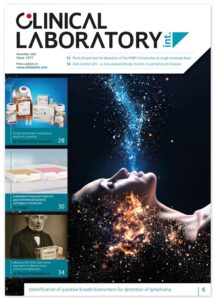Bio-Rad expands apoptosis detection capabilities with new StarBright conjugates
Bio-Rad Laboratories, Inc. has introduced a range of annexin V conjugates linked to eight StarBright Dyes, enhancing options for apoptosis detection in flow cytometry. The new conjugates are designed to support both conventional and full spectrum flow cytometry applications.
Improved flexibility in multicolour panels
The expanded range of annexin V conjugates offers researchers greater flexibility when incorporating apoptosis detection into multicolour immunophenotyping panels. The StarBright Dyes utilise all common laser lines found in flow cytometers, allowing researchers to avoid wavelengths typically occupied by viability dyes and fluorescent proteins.
Enhanced resolution and reduced interference
StarBright Dyes are characterised by narrow excitation and emission profiles, which Bio-Rad claims can reduce spillover and spreading effects. This feature potentially allows for high-resolution data acquisition, a critical factor in complex multiparameter experiments.
Hilary Mavor, Marketing Director of Bio-Rad’s Life Science Group, said: “The introduction of Annexin V StarBright Dye conjugates offers customers greater choice and flexibility when detecting apoptosis in both conventional and full spectrum flow cytometry.”
Mavor noted: “Bio-Rad has one of the most comprehensive ranges of annexin V conjugates, allowing users to follow best practice and accurately detect apoptosis with minimum spillover with their viability dyes.”
The new StarBright conjugates include:
• SBUV400
• SBUV795
• SBV440
• SBV515
• SBV790
• SBB675
• SBB765
• SBY800
These additions aim to provide researchers with an increased array of fluorophore options for early apoptotic cell detection, potentially enhancing experimental design capabilities in cell death studies and related fields.
For more information on Bio-Rad’s annexin V conjugates, visit: www.bio-rad.com/annexin-v-kit
Digital issue: Please click here for more information





